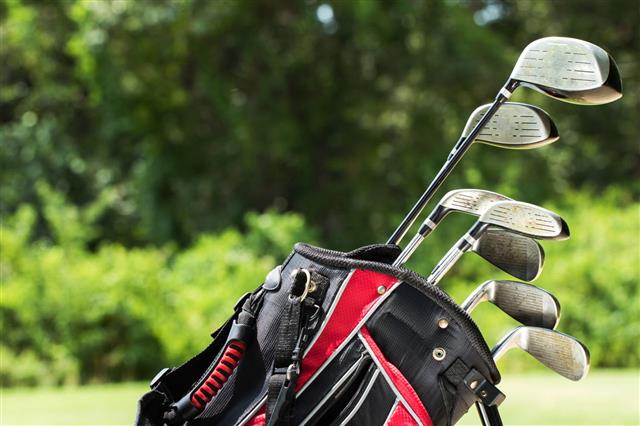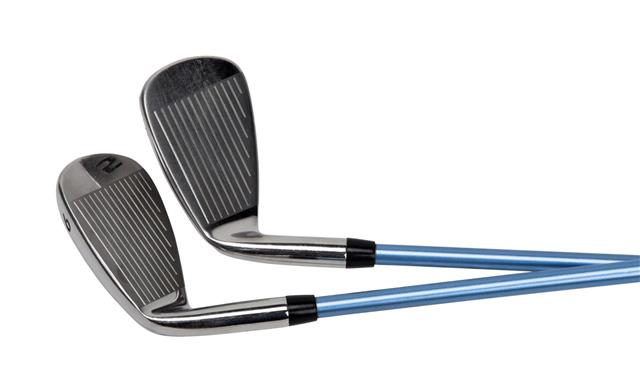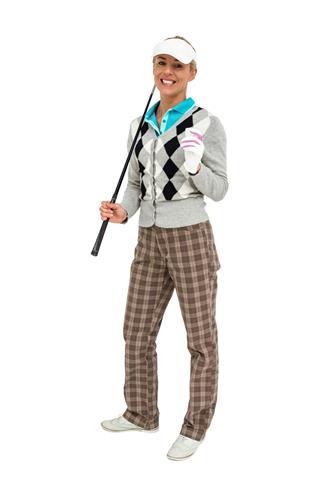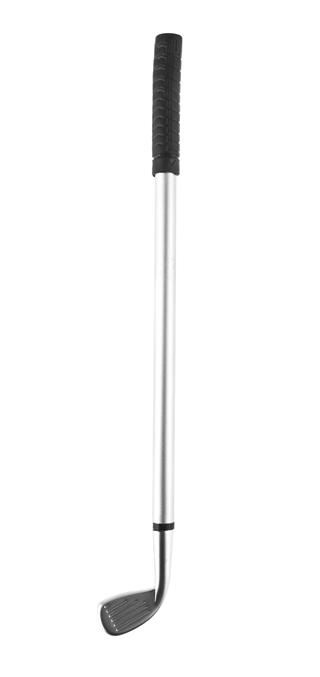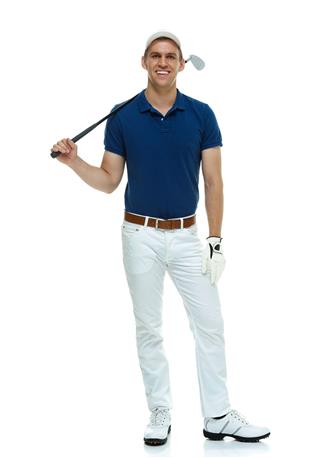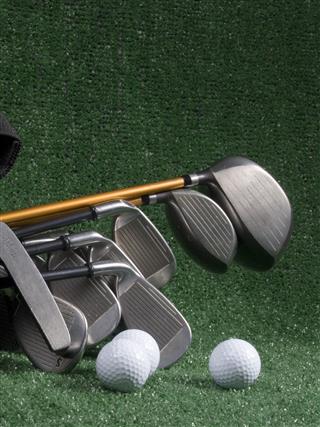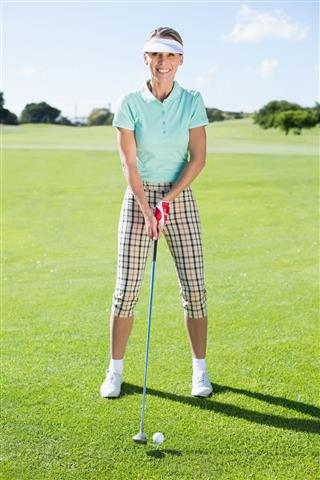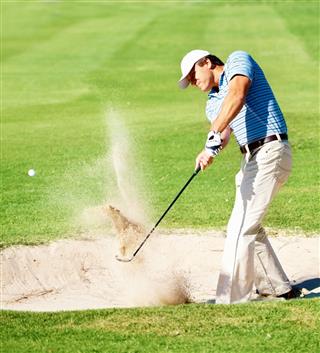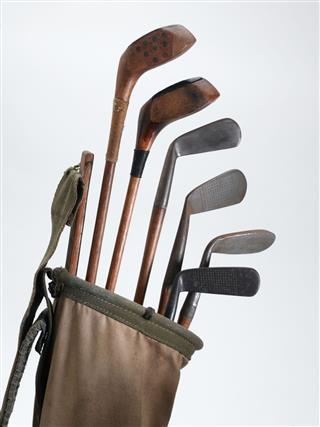
If you hear the word ‘wedge’ and think of golf, this is your cup of tea. Golf may be a recreational sport for many, but if you’re serious about improving your backswing, this article is a must-read. It presents the types and pictures of different golf clubs, for a better understanding.
Watch for the ‘Birdie’
Ab Smith, an American golfer, described a shot of his as a ‘bird of a shot’ in 1899. This later became popular as ‘birdie’. A ‘birdie’ was one shot less than an ‘eagle’, meaning two under par for a hole. Continuing this bird theme, an ‘albatross’ for its rarity was three under. Fourth one, though rarely used, is a condor.
A golf club consists of three parts; namely the grip, shaft, and clubhead. The grip is what the player holds onto while swinging the club. The grip has to be round without any lumps or hollows. It is made out of leather, rubber, and other materials, all of which are customized according to the golfer. The shaft of the club connects the grip to the head. It has to be round in cross-section like the grip. Shafts too are made of steel or carbon-resin, and differ as per a golfer’s personal taste. The head is where the energy of the swing transfers to.
There is variation in the appearance of clubheads, but all fall into the category of woods, irons, and putters. All the woods and irons are numbered; higher numbers indicate higher lofts and shorter shafts. The different types of golf clubs you would normally find in a golfer’s bag are:
Woods

➤ Woods are a must-have for every golfer. They are optimal for hitting long distances.
➤ For beginners, the driver is called a 1-wood. They were called ‘woods’ because the clubheads used to be made of wood. Now, they are made of steel, titanium alloy, or carbon-resin, which is comparatively expensive. It is the longest club in the bag, which makes it difficult to swing.
➤ Fairway woods like irons are progressive; that is, a 3-wood has more loft and will go farther than a 5-wood, and so on. It is the second longest club in the bag, and encouraged to use more than drivers. These have shorter clubheads, and their loft helps them hit the ball through the air.
➤ Balls are always placed forward in the stance, because they are intended to be hit in the upswing.
Irons

➤ Irons are used for hitting shots from the fairway to the green. The clubheads are thin on the front and back, imparting a spin on the ball. As with woods, ‘irons’ came to be because they were forged from iron.
➤ Irons come in 2 categories; namely ‘cavity back’ or ‘blades’. The difference is that a blade style features a full back on the rear of the head, whereas, in the cavity back, the rear is hollowed out or has a convex face. This creates an effect known as ‘perimeter-weighting’, where the clubs have low centers of mass and higher trajectories, and can hit at better distances than musclebacks. This type of design helps a skilled golfer ‘bend’ a shot around an obstacle.
➤ Irons typically come in long (2 – 4), medium (5 -7 ), and short (8 – 9).
➤ Irons are mostly used for chipping shots.
➤ The ball should always be placed one ball left of the center, as they have a flatter lie angle.
Wedges

➤ Wedges come with a higher degree of loft than irons. The clubheads of the wedges come in varying degrees of bounce, a quality produced by the thickness of the ground and sole of the club. Bounce is required to bounce the ball from the sand or turf, but pitch shots are easier to hit from clubs with no bounce.
➤ There are five types of wedges; with lofts ranging from 45° to 64°: pitching wedge (PW, also known as 10-iron), gap wedge (GW, also ‘approach’, ‘attack’, ‘utility’, or ‘dual’ wedge), sand wedge (SW), lob wedge (LW), and ultra lob wedge (sometimes called the ‘flop wedge’ or FW).
➤ Besides the putter, wedges can single-handedly determine the outcome of a game.
➤ The gap wedge, sand wedge, and lob wedge are often sold separately, or sometimes as a 3-club subset. These clubs are the most imperative, as they need to be the most accurate clubs.
➤ The ball should always be placed in the center of the stance.
Putters

➤ These are clubs with flat faces and no lofts or bounce angles. They are 32 – 36 inches in length. Their one unique aspect is that they are allowed to have two striking faces; bent shafts and grip cross-sections that are not rounded. They have plastic or metal inserts, to give it a smooth feel and rolling of the ball more smoothly.
➤ This is one of the clubs that you would use the most in the game. They are primarily used on the putting green or the area around the green called the ‘fringe’.
➤ Newer putters also include grooves on the face to promote roll, rather than skid off the impact.
➤ Place the ball two balls left from the center of the stance, for a good putt.
Hybrids/Utility

➤ These are a cross between woods and irons that aid in getting the ball airborne, experiencing fewer mishits, along with other technical features. They have a loft of 17 – 28 degrees.
➤ The clubhead is smaller than normal woods, and the shaft length is familiar to irons giving similar swing mechanics. Recreational golfers have replaced long irons with hybrids because they are far easier to use.
➤ Hybrids are numbered on the basis of the iron they are about to replace. For example, a 4-hybrid is named because it replaces a 4-iron. Most golf pros now carry hybrids.
➤ The ball should be placed half a ball left to the center of the stance. Or, you can place it accordingly as you would when using woods or irons.
Chippers

➤ A chipper is designed to look like a putter, but with a more lofted face. It has a loft greater than 10 degrees.
➤ It is used to lift the ball out of the rough and into the green, where it rolls like a putt.
➤ It lets you make a shot with a stance identical to a putt, which is impossible with a lofted iron because of the difference in lie angle.
Although these define the basic clubs you would need in a tournament, there are 14 of them in total. It’s recommended that you buy a beginner’s club set from your local sports store to get a feel of the sport. Don’t use a wood to hit a long shot just because you have seen one of the pros do it on TV.
